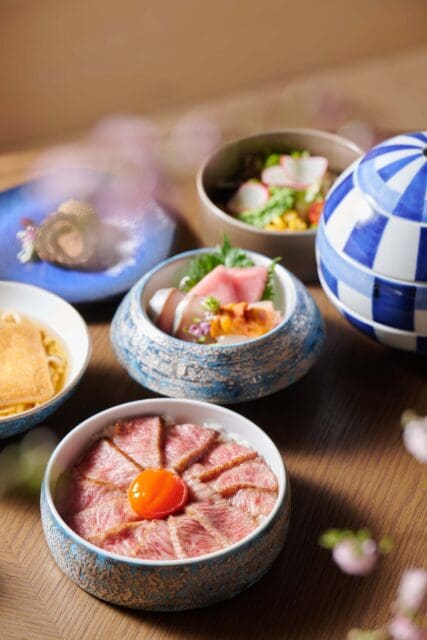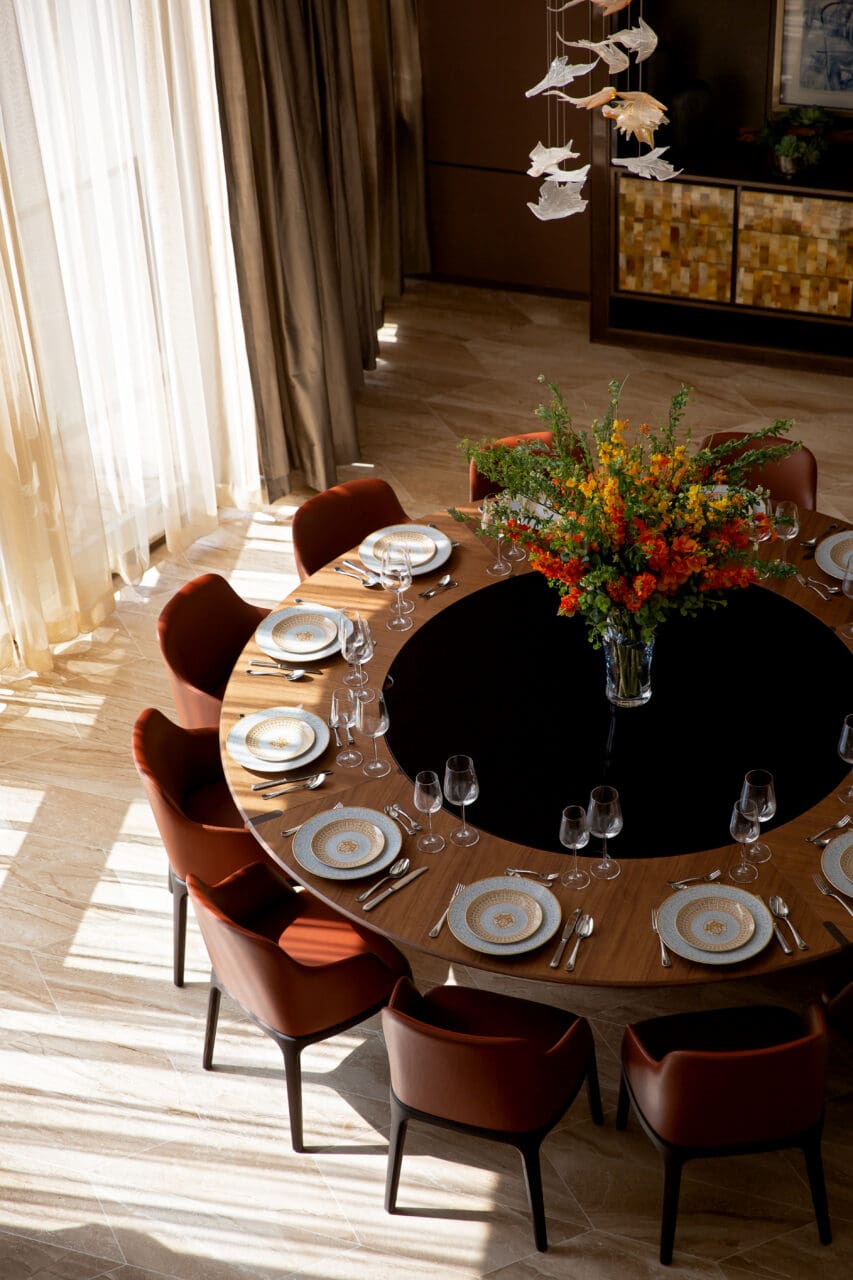In our increasingly multicultural communities, food becomes a reflection of human connection and the shared joys between people. As chefs take inspiration from the vast culinary traditions of our world, they bring new meaning to the idea of harmonious flavours.
Citrino da Yoshinaga Jinbo
The brains behind one Michelin-starred Ryota Kappou Modern have brought Japanese chef Yoshinaga Jinbo’s distinctive Nippon-Italian cuisine to Hong Kong with the opening of Citrino da Yoshinaga Jinbo. Chef de Cuisine Cyrus Yip explains Jinbo’s core culinary philosophy saying, “He uses premium Japanese ingredients, but Italian techniques to achieve perfection.”
This sentiment is reflected throughout Citrino’s menu, which brims with Jinbo’s signature recipes. Among them is the bean sformato with sea urchin—a seasonal spring delight back at Jinbo’s renowned restaurant in Tokyo, Jinbo Minami Aoyama, but a vibrant mainstay at Citrino. Chef Cyrus explains the beauty in the original Japanese name of Jinbo’s dish, “豆の声”, which can be interpreted as “a symphony of beans”. “All the elements of the dish are made with bean,” he says. “We blend fresh Japanese fava beans, blend it and strain it to create the purée.”
Sformato is a traditional Italian savoury cake often likened to soufflé for its light and creamy texture. At Citrino, it is given a coastal Japanese twist with added trimmings from white fish, scallops, and prawns, a crown of fresh sea urchin, and a simple edamame salad. Paper-thin crackers, bean espuma, and a parma ham crumble add textural intrigue. “In Japan, this dish does not have parma ham, but Hong Kong people in comparison enjoy more savoury flavours and a bit of a “kick” to their food, so we added it to give the dish more dimension.”
2F, 18 On Lan St, Central; @citrino_hk
1111 Ones
Inspired by a restaurant regular with a penchant for Beef Wellington, Chef Chris Chan set out to create 1111 Ones’ most intriguing signature dish yet. “We talked about how more people have been avoiding beef in recent years, so it got me thinking about creating a version without beef,” he says. “It then struck me that pigeon would be quite suitable, given its robustness.”
The Bresse pigeon Wellington at 1111 Ones adopts the idea of a French pithivier, with its flaky golden pastry shell and rich, savoury filling. The pastry is filled with house-grown white mushrooms and coral mushrooms duxelles, savoy cabbage, truffles, steamed semi-dried golden oysters sustainably sourced from Lau Fau Shan, and of course, Bresse pigeon.
“[The dish] is a perfect blend of Chinese cuisine and French traditions,” remarks Chef Chris. “I was born and raised in Hong Kong—a food paradise—and have been influenced by different culinary cultures. I hope that when enjoying Western cuisine, people can feel a sense of familiarity through the inclusion of Asian ingredients. Similarly, I also hope that foreign diners can experience the beauty of Chinese cuisine [in this way].”
11/F, 18 On Lan Street Central; @1111ones
Prince and the Peacock
“One fascinating aspect of Indian cuisine is its diversity, with various regional cuisines reflecting the multitude of cultures, languages and traditions in India,” says Chef Palash Mitra. Through Prince and the Peacock, he hopes to shine a light on his country’s rich culinary tapestries and offer a new perspective on Indian food.
To understand the spirit of this restaurant one only needs to take a look at the menu, where it becomes clear that Prince and the Peacock’s mission is as much about feeding the mind as it is about feeding the stomach. A glossary explains prevalent culinary terminology and outlines the various empires and regions from which Chef Palash draws inspiration from, while a statement reads, “It is our belief that there is no such thing as Indian cuisine, only cuisines of India.”
Patrons will recognise familiar dishes like Rogan josh, samosas, and biryani, yet be able to expand their horizons with those not often found in most Indian restaurants in the city—like chapli kebabs, for instance. Brought to India by the Mughals, these griddled and fried lamb patties have their roots in Pashtun tradition. Served with a roasted green tomato chilli sauce, pickled onions and fresh Japanese fruit tomatoes “for a tangy and crunchy contrast”, the chapli kebabs are made with ground lamb leg, chillies, garlic, onion, coriander and a signature mix of spices. “Common spices like cumin, coriander and garam masala bring warmth and depth, while fresh cilantro and mint add brightness,” shares Chef Palash.
2/F, Central Magistracy, Tai Kwun, 1 Arbuthnot Road, Central; @princeandthepeacock
Photography: Samantha Sin
Styling: Ella Wong
Editor
Alyanna Raissa J. PayosCredit
Lead image: Samantha Sin and Ella Wong for Vogue Hong Kong's September 2024 issue







